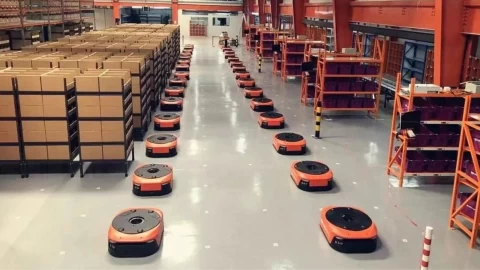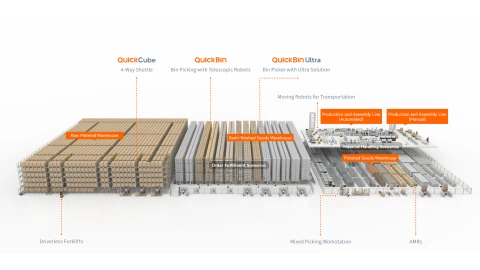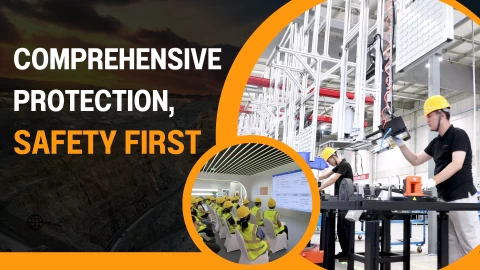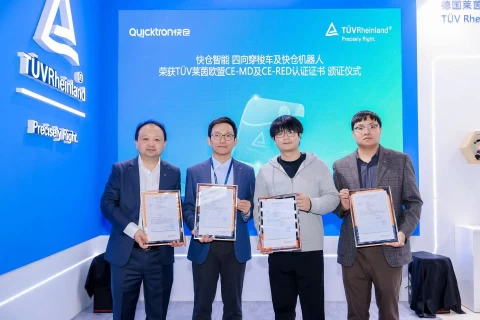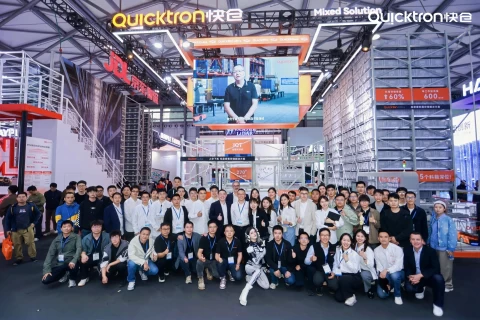The Future of Mobile Robots in Warehouses: Predictions for the Next Decade

As technology continues to evolve at a rapid pace, the integration of mobile robots in warehouses is transforming logistics, improving efficiency, and reducing costs. At Quicktron Robotics, we are at the forefront of this revolution, developing innovative robotic solutions that address the challenges of modern warehousing. Here, we delve into the future of mobile robots in warehouses, exploring predictions for the next decade and how Quicktron Robotics is shaping this future.
1. Exponential Market Growth
The market for mobile robots in warehouses is expected to grow significantly. According to a report by Allied Market Research, the global warehouse robotics market is projected to reach $9.05 billion by 2030, growing at a CAGR of 13.2% from 2021 to 2030 . This growth is driven by the increasing demand for automation, the rise of e-commerce, and the need for efficient inventory management.
2. Advanced AI and Machine Learning Integration
Future mobile robots will be equipped with advanced AI and machine learning algorithms, enabling them to perform complex tasks with greater precision and efficiency. A study by Accenture found that AI has the potential to boost labor productivity by up to 40% in some industries, including warehousing . At Quicktron Robotics, our AI-powered robots learn from their environments and improve over time, leading to increased productivity. These robots optimize picking routes in real-time, reducing the time and effort required to fulfill orders.
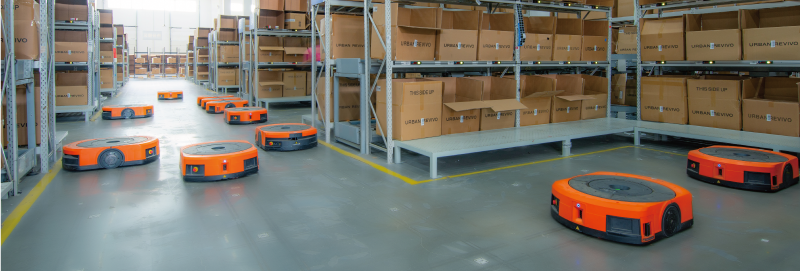
3. The Rise of Collaborative Robots (Cobots)
Collaborative robots, or cobots, designed to work alongside human workers, will become more prevalent in warehouses. According to a report by the International Federation of Robotics (IFR), the market for cobots is expected to grow from $1.2 billion in 2020 to $9.2 billion by 2028, reflecting a CAGR of 28.6% . Cobots assist with tasks such as lifting heavy items, performing repetitive actions, and ensuring safety. This collaboration leads to a more efficient and safer working environment. Quicktron's mobile robots are designed to seamlessly integrate with human workflows, enhancing overall productivity.
4. Improved Navigation and Flexibility
As robots become more autonomous and share space with humans, safety will be paramount. We'll see advancements in sensor technology and safety protocols to ensure seamless human-robot collaboration. Advancements in sensor technology and navigation algorithms will enable mobile robots to navigate warehouses more efficiently. At Quicktron Robotics, our robots are equipped with state-of-the-art sensors that allow them to avoid obstacles, adapt to changing environments, and work in tighter spaces. This flexibility is crucial as warehouses continue to evolve and adapt to new demands.
5. Integration with IoT and Smart Warehouses
The Internet of Things (IoT) will play a significant role in the future of mobile robots. By integrating with IoT devices, Quicktron Robotics' robots can communicate with other systems within the warehouse, such as inventory management systems and conveyor belts. This interconnectedness leads to smarter warehouses where robots autonomously manage inventory, predict maintenance needs, and optimize workflows. According to Statista, the number of IoT-connected devices is expected to reach 30.9 billion by 2025 .

6. Enhanced Data Analytics
With the integration of AI and IoT, mobile robots generate vast amounts of data. This data is analyzed to gain insights into warehouse operations, identify inefficiencies, and improve decision-making. Quicktron Robotics' enhanced data analytics capabilities allow for predictive maintenance, reducing downtime and extending the lifespan of robotic systems. According to Deloitte, predictive maintenance can reduce maintenance costs by 20% and unplanned outages by 50%.
7. The Impact on the Workforce
The increasing adoption of mobile robots will undoubtedly transform the warehouse workforce. While some jobs might be replaced by automation, new opportunities will emerge. The focus will shift towards roles that require technical skills, data analysis, and robot maintenance and supervision.

8. Sustainability and Energy Efficiency
As sustainability becomes a critical concern, the future of mobile robots in warehouses will focus on energy efficiency. Quicktron Robotics is committed to developing robots with lower power consumption and the ability to operate using renewable energy sources. This shift contributes to reducing the carbon footprint of warehouse operations. According to a report by the World Economic Forum, energy-efficient technologies could reduce industrial energy consumption by up to 30% .
9. Customization and Scalability
Future mobile robots will offer greater customization options to meet the specific needs of different warehouses. Quicktron Robotics provides versatile and scalable robotic solutions that can handle unique products and adapt to specific workflows. This customization ensures that warehouses can implement robotic solutions tailored to their operations, enhancing overall efficiency.
Case Study: Quicktron Robotics and L'Oréal
Quicktron Robotics recently partnered with L'Oréal to deploy our advanced intralogistics robots in their warehouses. This collaboration has resulted in a 30% increase in operational efficiency and a 20% reduction in order fulfillment time. Our robots have seamlessly integrated into L'Oréal's existing systems, demonstrating the power of advanced robotics in modern warehousing.
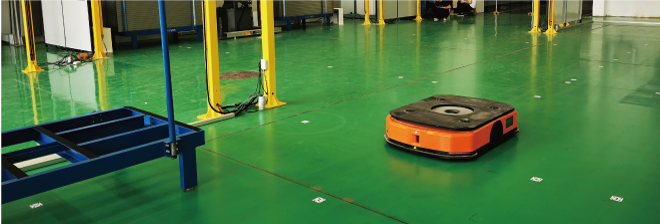
Conclusion
The next decade promises significant advancements in the field of mobile robots in warehouses. With increased adoption, enhanced AI capabilities, and greater integration with IoT, these robots will revolutionize warehouse operations. Quicktron Robotics is at the forefront of this transformation, driving innovation and efficiency in the logistics industry. As technology continues to evolve, warehouses will become smarter, more efficient, and more sustainable, paving the way for a new era in logistics.

Suni develops engaging content, manages impactful social media campaigns, and expertly handles online ads, webinars, podcasts, and video production. She builds strong client relationships by providing support and resources that help drive their sales success. Using a data-driven approach, Suni continually refines strategies and collaborates effectively to stay ahead in the fast-paced digital landscape.
